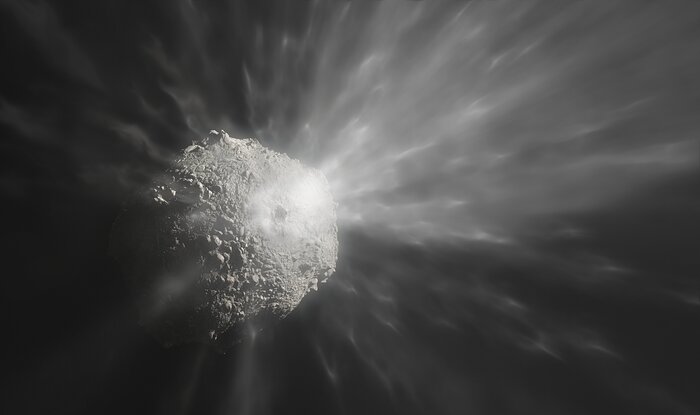What happened after DART asteroid impact? ESO's Very Large Telescope captures never-before-seen details

In September 2022, NASA's Double Asteroid Redirection Test (DART) spacecraft intentionally collided with asteroid Dimorphos - a planetary defence test conducted to test asteroid deflection capabilities. The European Southern Observatory's Very Large Telescope (VLT) in Chile observed the aftermath of this impact and now astronomers have shared the first results of these observations.
A team led by Cyrielle Opitom, an astronomer at the University of Edinburgh, followed the evolution of the cloud of debris for a month with VLT's Multi Unit Spectroscopic Explorer (MUSE) instrument and found that the ejected cloud was bluer than the asteroid itself was ahead of the DART impact, suggesting that the cloud could be made of very fine particles.
The researchers also observed clumps, spirals and an elongated tail emerging from the debris, in the hours and days following the collision. The spirals and tail were redder than the initial cloud, indicating that they might be composed of larger particles.
"This research took advantage of a unique opportunity when NASA impacted an asteroid, so it cannot be repeated by any future facility. This makes the data obtained with the VLT around the time of impact extremely precious when it comes to better understanding the nature of asteroids," Opitom noted.
Stefano Bagnulo, an astronomer at the Armagh Observatory and Planetarium in the UK and the lead author of the second study, and his team studied how the impact altered the asteroid's surface. Using the FOcal Reducer/low dispersion Spectrograph 2 (FORS2) instrument at the VLT, they kept an eye on the asteroid and found that the level of polarisation suddenly dropped after the impact, coinciding with an overall increase in brightness of the system.
The researchers propose that the impact could have caused the exposure of more pristine material from the interior of the asteroid.
"Maybe the material excavated by the impact was intrinsically brighter and less polarising than the material on the surface because it was never exposed to solar wind and solar radiation," Bagnulo said.
1/ 📢 First results in from ESO telescopes on the aftermath of #DART’s asteroid impact! https://t.co/FVLGfzwIJLThe collision was a test of #PlanetaryDefence, but also an opportunity to learn more about the asteroid’s composition. Read on👇 📷 ESO/Opitom et al. pic.twitter.com/Evfhwd9Nd4
— ESO (@ESO) March 21, 2023










